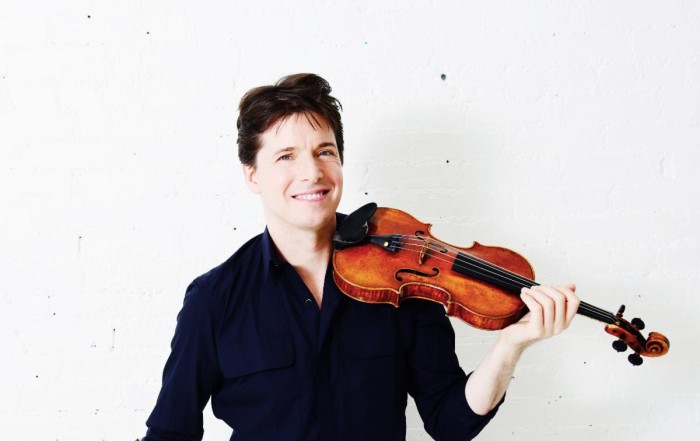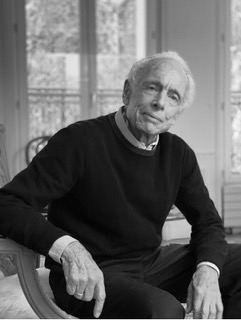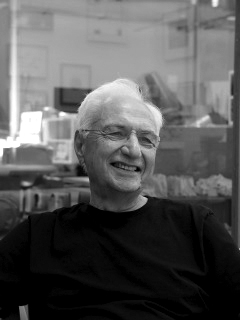Architecture as Art
Architecture as Art
The Venezuelan American Endowment for the Arts (VAEA) is pleased to announce that the PAEZ Medal of Art 2020 will recognize Architecture as an art form, and will bestow the medal to two distinguished architects from United States of America and Venezuela.
Architecture is tangible music and harmony that can be inhabited. Terms like rhythm, texture, and proportion are often used to describe a building or a piece of music. Dance creates space through music, and architecture organizes space into rhythm. To experience architecture or music requires an engaging participation and connection to other people. Architecture and music are part of an unrestricted communality, more than any other artistic form. It represents humanity’s achievements over any particular nation or culture. In this sense, musicians and architects must assume an ethical stand toward their own creation, be aware that their work is subject to constant reinterpretation reflecting in each turn and every historical moment. Nonetheless, a musical piece or a building represents an overall everlasting living human trace.
Buildings and music pieces are essentially works in progress, constantly altering their original design to maintain their conceptual essence. In this sense, the originality and richness of a building, like a musical piece, relies on the participation of others, those who over time change its original conception to deepen the concept that supports it. Architecture, like music, responds to a similar ecological principle—it can only be understood as part of an intricate system of cultural relationships. The experience of sensing a particular space or structure elicits like musical pieces encompassing sensations and emotions that last a lifetime. Like unquenchable beacons they guide our memory throughout the essential landscape of our past.
Venezuela: creating an architectural landscape
Recently, Venezuela has been recognized for its extraordinary musical pedagogy. “El Sistema,” Venezuela’s national system of orchestras created in 1975 by the late José Antonio Abreu, has transformed the lives of an entire generation through classical music, creating a selected group of renowned interpreters and orchestra directors. Gustavo Dudamel, acclaimed director of the Los Angeles Philharmonic since 2009, is the best known of a significant group of remarkable Venezuelan musicians working around the world. Similarly, Venezuelan architect Carlos Raul Villanueva distinguishes himself within the extraordinary group of architects that changed his country’s urban fabric. Venezuela’s buoyant economy, demographic, and cultural diversity attracted architectural firms from several countries that contribute to the international quality of the country’s throwing architectural design. Le Corbusier has in Villanueva an extraordinary interpreter who designed an insignia in Latin American modern architecture: the campus and buildings of the Universidad Central de Venezuela, the Ciudad Universitaria in Caracas, whose urban fabric he radically transformed with his public projects. Architecture set Caracas as staple of modernism and innovation, supported by a centralized wealthy state that used modernization to compensate popular aspirations for socioeconomic change. The advent of democracy in the country in 1959 coincided with the completion of a major park for Caracas designed by Brazilian artist and landscape architect Robert Burle Marx. Parque del Este was opened in 1961 as a natural refuge from the city’s swift urbanization and a tribute to its extraordinary natural setting. The monumental Avila Mountain set an unparalleled stage for some of Latin America’s most conspicuous deployments of rationalist architectural utopia. Villanueva most well known projects are public, but like any other Venezuelan architects in those prosperous times, he also completed remarkable private commissions; setting a trend in Venezuela’s architecture commissions ever since. Residential buildings in Caracas became icons of modernist aesthetics, like Villanueva’s residential compound El Silencio, an ambitious redevelopment project that sought to transform Caracas colonial downtown by integrating the city’s indigenous architecture into a functional modern grid. As the city grew eastward other buildings became iconic emblems of the city’s indigenous design. A residential building like “Altolar,” conveniently located in a hill overlooking the city’s new economic center was a prime example of an organic relation between the city’s inhabitants and its natural surroundings. One side of the building embraces the lush greenery like a skin projecting inward toward the woods, while the external façade offers the residents an extraordinary view of the Caracas Valley. The city’s intense tropical light and benign climate permeate the work of architect James Alcock. The architect’s own house is a simple cubic structure harmoniously integrated with “Parque Cristal,” a cube-like commercial structure he designed in the 1980s that pays tribute to the city’s natural setting with its immense glass walls mirroring the valley in all directions. The southern façade partially mirrors the city’s park designed by Roberto Burle Marx, as a tribute to the city’s multinational architectural design spirit. Parque Cristal stands in stark contrast with “El Cubo Negro,” which is a similar structure designed in the 1970s by American architects John Burgee and Philip Johnson, both emblems of a thriving period in Venezuela’s recent economic history, and two contrasting reflections on the city’s light and natural scenery. One outstanding building at the Universidad Central de Venezuela in Caracas offers a supreme example of the productive results of this conversation between diverse conceptions of architectural design and between architecture and other arts. The Aula Magna, the university’s main auditorium designed by Carlos Raul Villanueva incorporated Alexander Calder’s clouds, a superb combination of acoustic technology and artistic design.
The subtle functional beauty of the ceiling at the Walt Disney Concert Hall – the headquarters of the Los Angeles Philharmonic Orchestra, echoes this intrinsic collaboration between functionalism and artistic design. Architect Frank Gehry, the designer of this remarkable building, originally approached architecture fumbling around physics, woodwork, chemistry, and perspective. Incidentally, a ceramics teacher opened the world of architectural design to him. Also, it was the ceramic sculpture of a Greek youth that revealed to Gehry the transcendental nature of design: buildings must awake an emotional response that last through centuries. Gehry epitomizes the Fountainhead, the idealist American architect that set off in a mission to change the shape of our world, as we perceive it; a character masterfully rendered in a 1949 film by Gary Cooper. The curved angles, the glass and metal that configure Ghery’s large structures entice our imagination to look for natural resemblances: a cloud, an insect, a flower, but it is in his small-scale projects that we appreciate the artisan at his best. His designs for the Lewis House or the architect’s own house in Santa Monica demonstrate the key role played by chance in his endless creation and recreation of form through materials to evoke our experience of aesthetic pleasure, understanding this essential human emotion as “the imminence of a revelation” – as the Argentine writer Jorge Luis Borges suggested – not the revelation in itself, but its possibility, it is in this possibility offered to us that we find the transcendental emotional response Gehry always aspires to produce on us with his work.
For VAEA it is a privilege to honor this year an art that represents an integral part of our own being, an art we inhabit, we breathe, we transform into history. Architecture is nothing but our own personal history and the honorees represent an integral part of our lives.
Mario Valero PhD
Associate professor
Fashion Institute of Technology New York
VAEA’s advisory board member
|
|
The Paez Medal of Art 2022 to Joshua Bell
The Paez Medal of Art 2022 to Joshua Bell VAEA 33rd anniversary announcement Oct 25th, 2023 Immediate Release A message from our: Chairman, Ali Cordero Casal and The [...]
Fundación Empresas Polar The Páez Medal of Arts 2021
July 29th, 2022 FOR IMMEDIATE RELEASE A message from The Venezuelan American Endowment for the Arts Reinaldo & Carolina Herrera Advisory Board Chairs Ali Cordero Casal Chairman The Board of Directors [...]
JAMES ALCOCK is one of the two recipient of VAEA’s Páez Medal of Art 2020
June 13th 2020 FOR IMMEDIATE RELEASE A message from The Venezuelan American Endowment for the Arts Ali Cordero Casal Chairman The Venezuelan American Endowment for the Arts & the Board of Directors Today we [...]
FRANK GEHRY is one of the two recipient of VAEA’s Paez Medal of Art 2020
June 13th 2020 FOR IMMEDIATE RELEASE A message from The Venezuelan American Endowment for the Arts Ali Cordero Casal Chairman The Venezuelan American Endowment for the Arts & the Board of Directors Today we [...]
JULIAN SCHNABEL is one of the two recipient of VAEA’s Paez Medal of Art 2019
June 13th 2019 FOR IMMEDIATE RELEASE A message from The Venezuelan American Endowment for the Arts Ali Cordero Casal Chairman The Venezuelan American Endowment for the Arts & the Board of Directors Today we [...]





